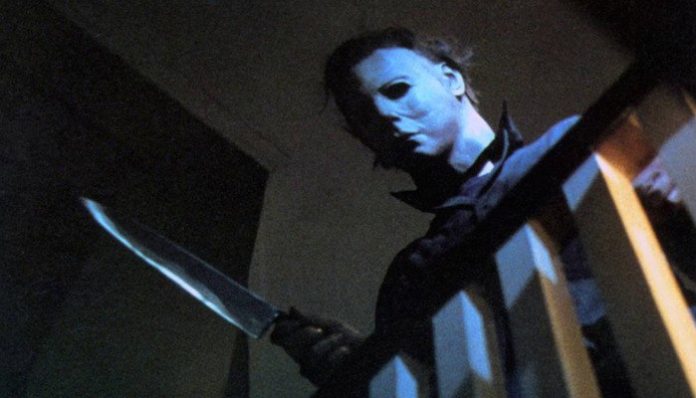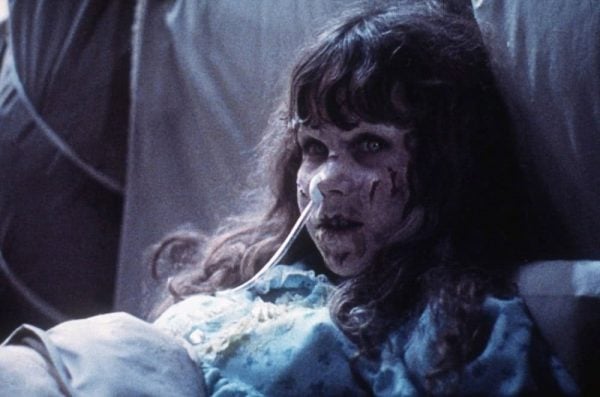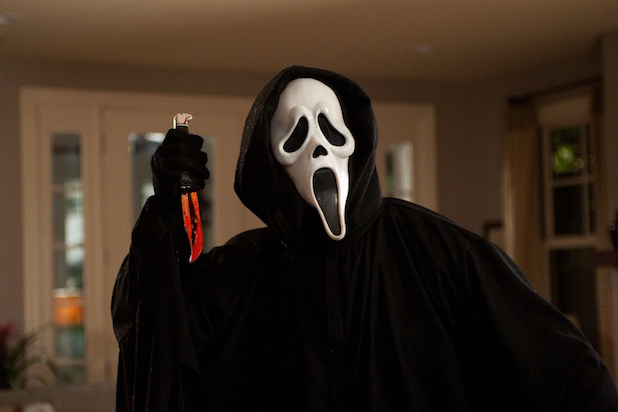Hi everyone!
Today I'll be discussing the genre of horror, my favorite genre of film.
A horror film is a film that seeks to provoke fear in its audience. Horror films often aim to target the audience’s fear of the unknown. The conventions of horror consist of dread and alarm, fear and panic, and may include a shocking finale. The typical target audience of the horror genre typically ranges from teens to young adults.
These conventions are implemented into production techniques typically through setting and characters. Typical locations for a horror film include: cabins, abandoned houses, hotels, basements, and barns and farms. The characters in a horror film often include the protagonist along with supporting characters and a main perpetrator.
Usually in slasher films (a sub-genre of horror) the main perpetrator wields a weapon that can be used to easily identify this character through the use of props. Horror films also utilize lighting by using shadows or other forms of dark lighting to create that sense of fear or suspense.
The horror genre is marketed through trailers that may use particularly scary scenes that can be seen throughout the actual film. This is used to draw attention from the audiences and get them to go watch the film. Creepy horror movie posters with dark or frightening images may also be used to market a film.
One horror film that implements most of these conventions, or characteristics is Sean S. Cunningham’s Friday the 13th (1980). In this film, there’s an unseen perpetrator throughout the film that murders various camp counselors at a summer camp. The setting of the summer camp is on a lake in the middle of nowhere, a perfect setting for a horror film. The film includes pop-outs, which today seem cheesy, and various scenes of teens meeting grisly deaths. You can say fake blood was essential in the making of this film. The perpetrator isn’t revealed until the end of the film as Jason Voorhees’ mother, a boy who drowned at the summer camp years earlier. His mother swore revenge on the counselors which is why she carried out the murders.
The film has a shocking finale as the protagonist sits in a boat and a young Jason Voorhees’ jumps out of the water and grabs her. The Friday the 13th series is often associated with the hockey mask, machete-wielding, Jason Voorhees. However, this Jason is not seen until later films in the series.
Another film that embodies the horror genre is Alfred Hitchcock’s Psycho (1960). Hitchcock is commonly known as the “master of horror,” directing some of the best horror films of his time. Today, Psycho lives on as one of the best horror films of all time.
Psycho follows the story of a young woman who steals from her employer and goes on the run. She stops at the Bates Motel on the way, another perfect setting for a horror film. She meets Norman Bates who seems fairly normal. Fast-forward to the famous shower scene where the young woman is murdered by an unseen perpetrator, with the silhouette of a woman, wielding a knife. The blood, the shots, and the music in this scene truly give the audience an uneasy feeling and they’re reminded just why this is considered a horror film. The young woman’s sister, Lila, eventually arrives at the motel with her sister’s boyfriend, Sam, with the intent of looking for clues on her sister’s disappearance. While looking for clues in the fruit cellar of Norman’s house, she sees the figure of an old woman, presumably Norman’s mother, sitting in a chair with her back facing Lila. This scene creates incredible suspense for the audience as we are about to see who Norman’s mother really is. As Lila puts her hand on Mrs. Bates’ shoulder, the chair swivels around to reveal the decayed corpse of an old woman.
This scene, paired with shocking music, was considered extremely frightening, especially for the time of filming. As Lila backs up a woman runs in weilding a knife. Her wig falls off and the woman is revealed to be Norman dressed up as his mother. This shocking finale is a famous one in horror movie history.
Other examples of horror films include:
 |
| Halloween (1978) |
 |
| Hellraiser (1987) |
 |
| The Exorcist (1973) |
 |
| Nosferatu (1922) |
 |
| A Nightmare on Elm Street (1984) |
 |
| Scream (1996) |








